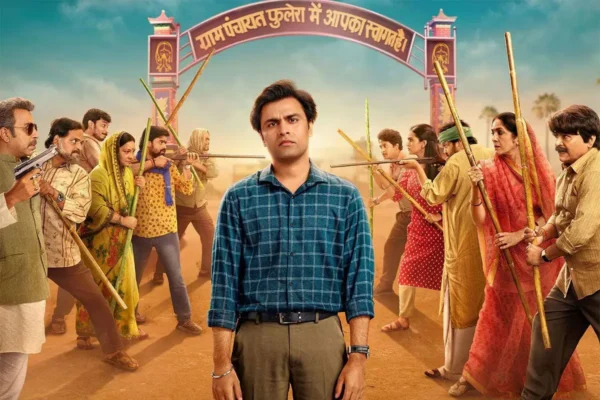
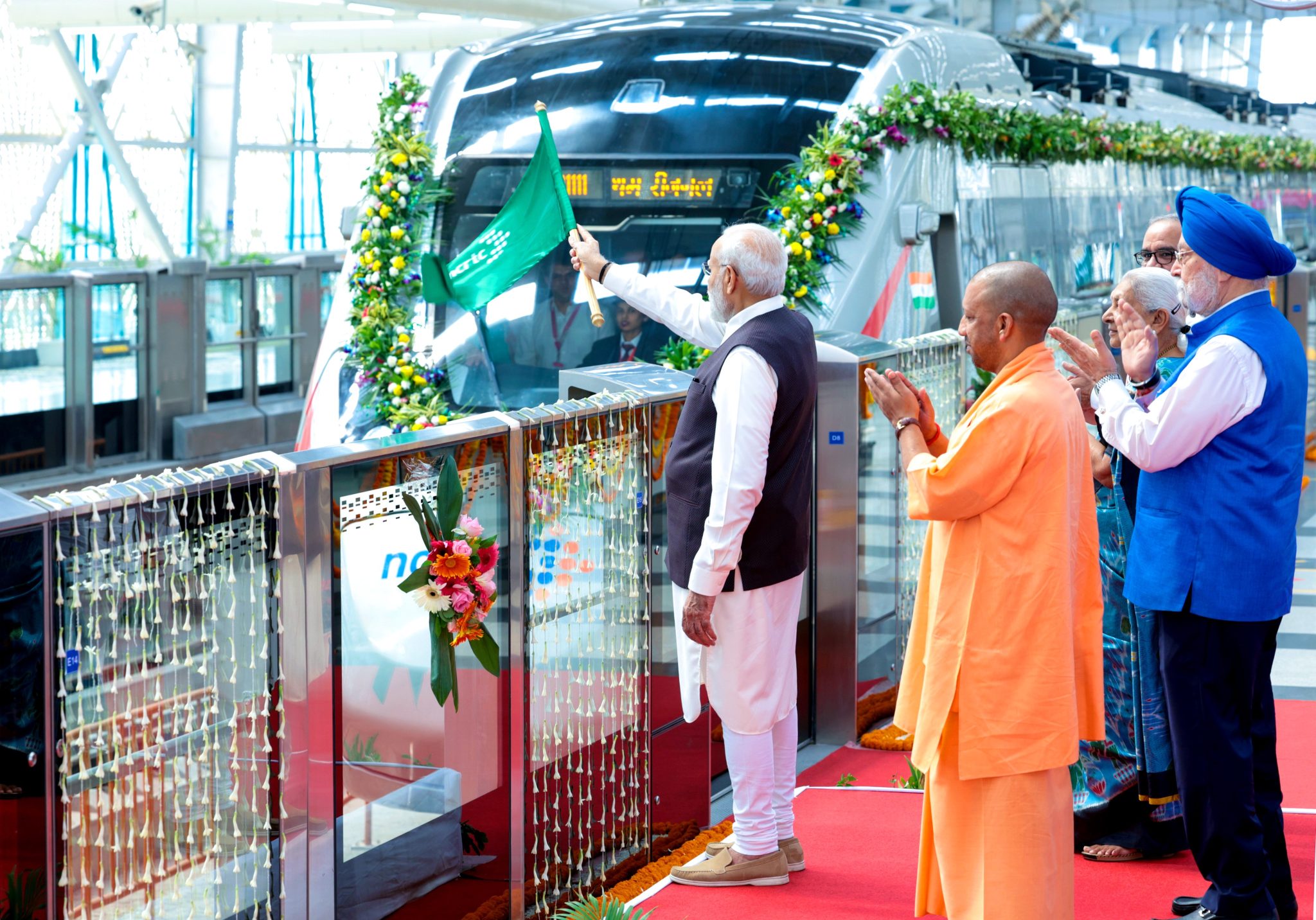
Delhi-Meerut RRTS Corridor Expansion: Prime Minister Inaugurates Critical Delhi Section, Revolutionizing Regional Transit
Delhi-Meerut RRTS Corridor Expansion: Prime Minister Inaugurates Critical Delhi Section, Revolutionizing Regional Transit
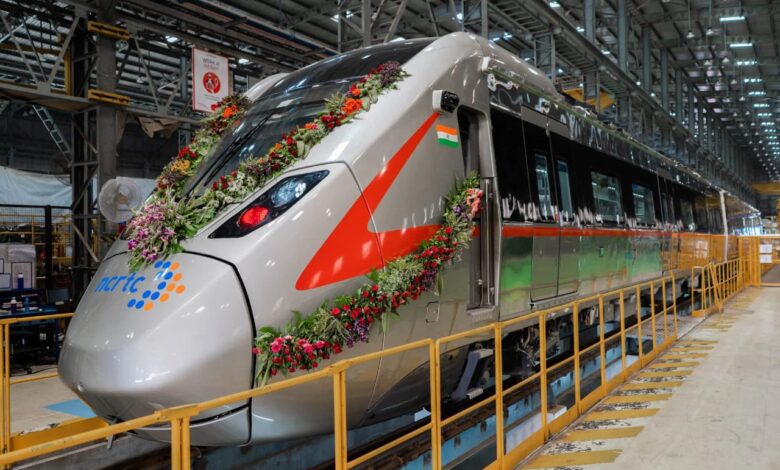
Inauguration Event and Key Development
On January 5, 2025, Prime Minister Narendra Modi inaugurated a significant 13-kilometer section of the Delhi-Meerut Regional Rapid Transit System (RRTS) corridor. This new section connects Sahibabad in Uttar Pradesh to New Ashok Nagar in Delhi, marking a crucial expansion of the RRTS network into the national capital. During the inauguration, the Prime Minister personally experienced the service by taking a ride on the Namo Bharat train from Sahibabad to New Ashok Nagar station, where he engaged with children and passengers.
Operational Details and Service Parameters
The newly operational section forms part of a larger 55-kilometer corridor stretching from New Ashok Nagar to Meerut South, encompassing 11 stations. Regular passenger services commenced at 5 PM on the inauguration day, with trains operating at 15-minute intervals. The fare structure has been set at ₹150 for standard coach travel and ₹225 for premium coach services between New Ashok Nagar and Meerut South, making it an accessible transportation option for various commuter segments.
Infrastructure and Connectivity Features
A significant aspect of this extension is the inclusion of a 6-kilometer underground stretch, featuring the strategically important Anand Vihar station. This station serves as a major transit hub, integrating multiple transport modes by connecting the Blue and Pink Lines of the Delhi Metro, a railway station, and a bus terminal. The New Ashok Nagar RRTS station also provides crucial interchange facilities with the Delhi Metro’s Blue Line, enhancing the network’s connectivity and accessibility.
Project Development Timeline
This inauguration builds upon the previous milestone achieved on October 20, 2024, when the 17-kilometer priority section between Sahibabad and Duhai Depot was launched. The progressive development of the RRTS corridor demonstrates the systematic implementation of this ambitious infrastructure project, with each phase contributing to the overall regional connectivity goals.
Impact on Regional Connectivity
The launch of this new section has revolutionized travel between Delhi and Meerut, reducing journey times by approximately two-thirds. The most significant benefit is the ability to travel from New Ashok Nagar to Meerut South in less than 40 minutes, offering commuters a dramatically faster alternative to existing transport options. This improvement in travel time is expected to have substantial positive impacts on regional mobility and economic activity.
Comprehensive Network Overview
The complete Namo Bharat corridor spans an impressive 82 kilometers, connecting Sarai Kale Khan in New Delhi to Modipuram in Meerut. The infrastructure includes 16 Namo Bharat stations along the main corridor and nine additional Meerut Metro stations, creating a comprehensive transit network that serves both inter-city and intra-city transportation needs.
Future Implications and Regional Development
This expansion represents a significant step in modernizing India’s regional transportation infrastructure. The RRTS corridor is expected to catalyze economic development along its route, reduce traffic congestion, and provide environmentally sustainable transport options. The success of this project could serve as a model for similar regional rapid transit systems across India, potentially transforming how metropolitan regions are connected.
The inauguration of this section marks a crucial milestone in India’s infrastructure development, demonstrating the government’s commitment to modern, efficient, and integrated transportation solutions. The project’s completion and successful operation will likely influence future urban planning and regional development strategies across the country.


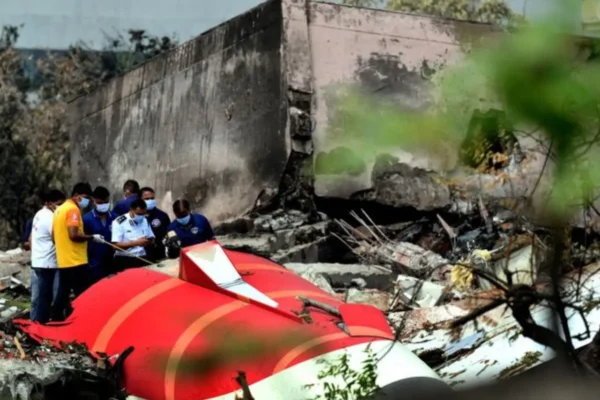


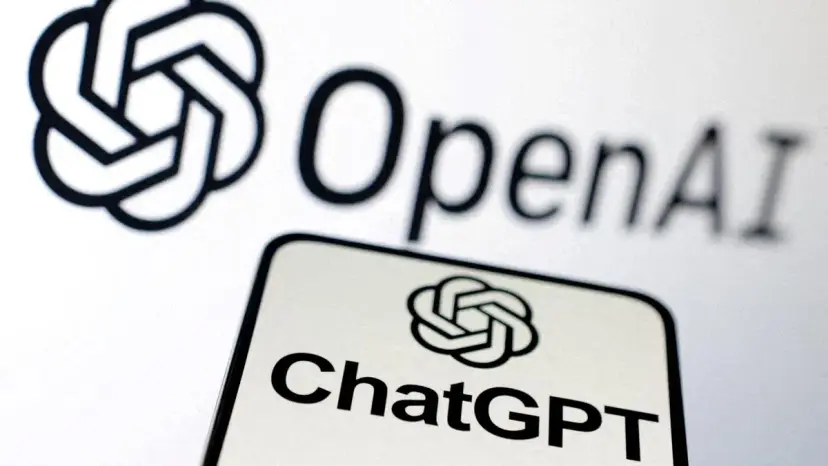
I don’t think the title of your article matches the content lol. Just kidding, mainly because I had some doubts after reading the article.
Your article helped me a lot, is there any more related content? Thanks!
Your point of view caught my eye and was very interesting. Thanks. I have a question for you.
Can you be more specific about the content of your article? After reading it, I still have some doubts. Hope you can help me.
Your point of view caught my eye and was very interesting. Thanks. I have a question for you.
Your article helped me a lot, is there any more related content? Thanks!
It’s remarkable to go to see this site and reading the views of
all friends concerning this paragraph, while I am also eager of
getting experience. https://Yv6Bg.Mssg.me/
Thanks for sharing your thoughts about Hogle.
Regards https://lr-mediconsult.de/Unternehmen/tonebet-casino/
Shining Crown RTP göstəricisi yüksək uduş şansı təqdim edir.
Crown shining sadə və maraqlı oyun təcrübəsidir.
Shining crown bell link demo yeni oyunçular üçün idealdır. Shining crown demo superbet variantı real casino təcrübəsinə yaxındır. Shining crown big win xəbərləri tez-tez yayımlanır.
EGT digital shining crown yüksək keyfiyyətə malikdir.
Shining crown free slot real uduş öncəsi sınamağa imkan verir.
Daha ətraflı buradan baxın shining crown demo.
Shining crown slot game yüksək qrafika və səs effektləri ilə zəngindir.
Shining crown demo oyna risksiz məşqdir.
Əyləncə və real qazanclar üçün Sunny Coin: Hold The Spin slot əladır. Sunny coin: hold the spin slot bonusları çox maraqlıdır.
Sunny coin 2 hold the spin ilə uğurlu nəticələr mümkündür. Sunny Coin 2 hold the spin slot oynamaq həyəcanlıdır.
Həqiqi qazanc üçün daxil olun Sunny coin 2 hold the spin online.
Sunny Coin 2 hold the spin slot bonus imkanları çox genişdir. Sunny Coin Hold The Spin online casino oyunçular üçün məşhurdur. Sunny coin hold the spin slot online rahat oynanır.
Sunny Coin 2: Hold The Spin slot bonus funksiyaları əladır. Sunny coin 2 hold the spin slot oyununda böyük qaliblər var.
Formula 1 izləmək üçün hansı kanalları seçmək barədə tövsiyələr. Formula 1 logo və brendləşmə detallarını kəşf edin.
Pilotlar haqqında geniş məlumat əldə edin ➡ formula 1 drivers.
Formula 1 schedule daim yenilənir və asan izlənilir. Formula 1 izləmək üçün mobil tətbiqlərin üstünlükləri.
Formula 1 haqqında maraqlı tarixi faktlar. Formula 1 volunteer olmaq istəyənlər üçün təcrübə. Formula 1 izləmə yolları haqqında faydalı təlimatlar. Formula 1 azerbaycanda keçirilən yarışlar barədə maraqlı faktlar.
iOS üçün soccer yükləyib pulsuz oynayın.
Soccer 24 tətbiqi ilə matç nəticələrini izləyin. Müxtəlif futbol oyunlarını kəşf etmək üçün soccer games bölməsini sınayın.
Soccer champs mod apk ilə oyun daha maraqlı olur. Soccer ball mexanikası real futbol topuna çox yaxındır. Soccer bros multiplayer futbol üçün əla seçimdir.
World soccer champs hile apk oyunçular arasında məşhurdur. Soccer stars sadə amma maraqlı oyundur. Livescore.com.tr live soccer scores azarkeşlər üçün əhəmiyyətlidir. World soccer champs hile son sürüm oyunçuların seçimi olub.
Your point of view caught my eye and was very interesting. Thanks. I have a question for you.
LaLiga azarkeşləri üçün canlı yayım imkanı. Ən çox xal toplayan komandanı buradan öyrən.
LaLiga canlı nəticələri anında görün. Yeni mövsüm üçün LaLiga logo 2025 təqdim edildi.
Komandaların son nəticələri haqqında daha ətraflı məlumat üçün LaLiga turnir cədvəli səhifəsinə daxil olun.
Goal scorer LaLiga siyahısına baxmaq istəyirsiniz?.
LaLiga tv canlı baxmaq üçün seçimlər.
Ən yaxşı LaLiga oyunçuları 2025.
All LaLiga winners tarixi maraqlıdır.
Futbol azarkeşləri üçün LaLiga livescore bölməsi.
Модрич Реал Мадридде канча жыл супер деңгээлде ойноду!Көпчүлүк күйөрмандар Модричтин кетишине ишенбей жатат. Лука Модрич канча гол киргизгенин билесиңби? Жаш өткөн сайын Модричтин тажрыйбасы баалуу болуп жатат. Баракчасын сактап кой, кийин бат табасың: http://www.luka-modric-kg.com. 2018-жылы Алтын топ алганы эсте калды.
Модрич Реалдын орто талаасын башкарып келет көп жылдан бери. Лука Модрич жашоодон сабак алуунун үлгүсү. Модрич акчадан мурда сыймыкты ойлойт. Лука Модрич келечекте кайсы клубга өтөт деп ойлойсуң?
Ким болбосун, Алекс Перейра менен октагонго чыккандан кийин өзгөрөт. Мен Перейранын ар бир беттешин күтүп көрөм. Эгер Перейранын акыркы беттешин көргүң келсе, кирип чык https://alex-pereira-kg.com. Алекс Перейра менен Анкалаев беттешсе, эмне болот экен?
Көптөр Перейраны жеңет дешет, бирок ал дайыма жооп берет.
Перейра дайыма өзүн жакшыртып келет. UFC тарыхында мындай энергия сейрек болот. Ким болбосун, Перейраны жеңүү кыйын.
Перейра — элдин арасынан чыккан легенда. Бул жөн эле мушкер эмес, бул философ.
Флойд Мейвезер дүйнөдөгү эң белгилүү мушкерлердин бири. Флойд Мейвезердин тарыхтагы орду эч кимге талашсыз. Акыркы маектерди жана статистиканы Флойд Мейвезер интервью бөлүмүнөн окуңуз.
Флойд Мейвезердин жашоосу мотивация берет. Флойд Мейвезердин фанаттары дүйнө жүзүндө. Флойд Мейвезер ар дайым өзүн мыкты формада кармаган.
Флойд Мейвезер – профессионалдуулуктун чордону.
Флойд Мейвезер ар дайым өз максатына жеткен. Флойд Мейвезер ар дайым өзүнө ишенген. Флойд Мейвезердин ар бир жаңылыгы спорт дүйнөсүндө жаңылык.
**mind vault**
mind vault is a premium cognitive support formula created for adults 45+. It’s thoughtfully designed to help maintain clear thinking
Анын голдорунун статистикасы абдан таасирдүү.Кейн өзүнүн эмгеги менен сыйлыкка татыктуу болду. Футбол сүйүүчүлөрү бул шилтемеден пайдалуу маалымат ала алышат: http://harry-kane-kg.com. Кейн бир нече жолу “Алтын бутса” уткан.
Кейндин трансфери чоң көңүл бурдурган.
Гарри Кейн жеке жашоосун ачык көрсөтпөйт. Футболдо мындай туруктуу оюнчулар аз. Гарри Кейндин жашы чоң тажрыйбага жол ачат. Ал бала чагынан эле футболчу болууну каалаган. Анын карьерасындагы командалар көп. Кейндин трансферлери ар дайым чоң темалар.
Жанкүйөрлөр үчүн ыңгайлуу навигация: акыркы жаңылык, кийинки беттеш, коэффициенттер жана прогноздор.
Пресс-конференция жана тарсылдатуу жыйынтык видеолору бет ачылгандан кийин эле жеткиликтүү. islam-makhachev-kg.com Расмий жаңылыктар, рекорд жана статистика бир жерге топтолгон. Мобилдиктен окууга ыңгайлуу. Ислам Махачев — Арман Царукян реваншы мүмкүнбү, эксперттик пикирлерди жыйнадык. Илия Топурия vs Ислам Махачев айкашы жөнүндө ушак-айың эмес, текшерилген булактар гана берилет. Салмакты калыбына келтирүү жана кемитүү тартиби боюнча расмий маалыматтардан үзүндүлөр келтирилет.
Sherdog жана расмий UFC профилдерине жол көрсөткүч шилтемелер бар. Кайсы раунддарда өзгөрүү болушу ыктымал экенин тенденцияларга карап белгилеп беребиз. Сүрөттөр жана обои: социалдык тармак үчүн ылайыктуу форматтар жана резолюциялар бар. Сырттагы булактарга кеткенде коопсуздук эскертмелери жана расмий шилтемелер колдонулат.
Где сейчас играет Неймар и под каким номером? Нужны быстрые ответы для мобил фанатов mobil futbol. Интересует «неймар рост вес возраст» по годам — удобнее видеть в одной инфографике. Собираю редкие «неймар сантос фото» в высоком качестве — делюсь находкой. [url=neymar-kg com]neymar-kg com[/url]. Нужны «обои неймар 4к» без компрессии и с правильным кропом под разные экраны.
Неймар Бразилия: обои в национальной форме, стадионный свет и динамика движения. Нужны «обои на телефон футбол Неймар» в вертикальном формате 1080×2400. Неймар толстый — ещё один миф: интересен анализ формы после травм и пауз. Неймар ПСЖ 2018 — топовый сезон по влиянию между линиями; ищу срез по матчам.
Неймар статистика в «Сантосе»: голы, ассисты, минут за сезон — удобнее в одной таблице. Неймар новости — лучше краткие дайджесты, чем длинные простыни текста.
Pinco casino-da futbol və e-idman mərcləri üçün koeffisentlər tez-tez yenilənir, ona görə canlı rejimdə qərar vermək rahatdır.
Kupon redaktəsi və cash-out imkanı mərcin riskini idarə etməyə kömək edir. Yeganə düzgün keçid budur — PINCO-CASINO-AZERBAIJAN.BIZ.UA; pinco casino azerbaycan qaydaları burada açıqlanır. Sürətli ödəniş üçün sevimli metodları saxlayıb bir kliklə istifadə etmək olur. Top oyunlar və yeni relizlər ayrı vitrinlərdə təqdim edilir.
Oyun qaydaları hər masada ayrıca açılır və suallara cavab verir. Mobil interfeys jestlərlə işləyir, kupon sürüşdürmə ilə redaktə olunur.
Dəstək 24/7 işləyir, chat cavabları adətən 1–2 dəqiqəyə gəlir. Valideyn nəzarəti üçün marşrutlar və məsləhət linkləri toplanıb. Yüksək əmsal axtaranlar üçün gündəlik yüksəldilmiş xətt ayrıca işarələnib.
Роберт Левандовскинин машыгуусу көптөргө үлгү.
Левандовскинин жубайы жана үй-бүлөсү тууралуу көптөр кызыгат. Роберт Левандовски карьерасында жүздөгөн гол салган. Роберт Левандовски дүйнөлүк футбол жылдызы. Футбол боюнча көбүрөөк маалымат жана Роберт Левандовски тууралуу окугуңуз келсе, бул булакты караңыз — Роберт Левандовски расмий сайт. Бул жерден акыркы жаңылыктарды таба аласыз. Роберт Левандовски Барселонада мыкты старт жасаган.
Левандовски өзүнүн эмгеги менен дүйнөгө белгилүү болгон. Роберт Левандовскинин жаракаты көпчүлүктү тынчсыздандырган.
Роберт Левандовски үй-бүлөсүнө чоң маани берет. Роберт Левандовски ар дайым эмгектин баасын билет.
I don’t think the title of your article matches the content lol. Just kidding, mainly because I had some doubts after reading the article. https://www.binance.info/pl/register-person?ref=YY80CKRN
Рейтинг казино онлайн Україна допомагає знайти перевірені платформи. Казино онлайн Україна відкривають доступ до сотень ігор.
Українські онлайн казіно активно впроваджують нові технології. Тут зібрано довідки про бонуси, ліміти та провайдерів: CASINO-UA-ONLINE.BIZ.UA. Укр казино розвивається з кожним роком, залучаючи нових гравців.
Рейтинг казино Україна створено на основі реальних відгуків. Українські казино з ліцензією забезпечують повну безпеку користувачів. Казино онлайн Україна дає змогу грати без ризиків. Онлайн казино Україна гарантує надійність і комфорт. Ліцензійні казино України пропонують чесні акції для всіх.
Entdecken Sie die besten Weinverkostungen in Wien auf wine tasting vienna.
Besucher konnen hier erstklassige Weine in malerischer Umgebung probieren.
Die Weinverkostungen in Wien sind perfekt fur Kenner und Neulinge. Viele Veranstaltungen werden von erfahrenen Sommeliers begleitet.
#### **2. Die besten Orte fur Weinverkostungen**
In Wien gibt es zahlreiche Lokale und Weinguter, die Verkostungen anbieten. Das Weinmuseum im Stadtzentrum ist ein idealer Ausgangspunkt fur Weinliebhaber.
Einige Winzer veranstalten Fuhrungen durch ihre Kellereien. Zusatzlich konnen Gaste direkt beim Erzeuger kosten.
#### **3. Wiener Weinsorten und ihre Besonderheiten**
Wiener Weine sind vor allem fur ihre Vielfalt bekannt. Rote Weine wie der Blaue Zweigelt gewinnen immer mehr an Beliebtheit.
Die Bodenbeschaffenheit und das Klima pragen den Geschmack. Die warmen Sommer sorgen fur vollmundige Aromen.
#### **4. Tipps fur eine gelungene Weinverkostung**
Eine gute Vorbereitung macht die Verkostung noch angenehmer. Ein neutraler Geschmack im Mund vor der Verkostung verbessert das Erlebnis.
Gruppenverkostungen bringen zusatzlichen Spa?. Viele Veranstalter bieten thematische Verkostungen an.
—
### **Spin-Template fur den Artikel**
#### **1. Einfuhrung in die Weinverkostung in Wien**
In der Stadt finden sich zahlreiche Weinguter, die eine lange Geschichte haben.
#### **2. Die besten Orte fur Weinverkostungen**
Zusatzlich konnen Gaste direkt beim Erzeuger kosten.
#### **3. Wiener Weinsorten und ihre Besonderheiten**
Die warmen Sommer sorgen fur vollmundige Aromen.
#### **4. Tipps fur eine gelungene Weinverkostung**
Es empfiehlt sich, langsam zu trinken, um die Nuancen zu schmecken.
Discover exquisite Austrian wines at https://wine-tasting-wien.netlify.app/ and immerse yourself in Vienna’s vibrant wine culture.
Wien begeistert mit seiner langen Weintradition und zeitgenossischen Angeboten. Die Region ist bekannt fur ihren exzellenten Wei?wein, besonders den Grunen Veltliner. Die Weinkeller Wiens locken mit ihrem authentischen Charme und kostlichen Tropfen.
Das milde Klima und die mineralreichen Boden begunstigen den Weinbau. Das gibt den Wiener Weinen ihren unverwechselbaren Charakter.
#### **2. Beliebte Weinregionen und Weinguter**
In Wien gibt es mehrere renommierte Weinregionen, wie den Nussberg oder den Bisamberg. Diese Gebiete sind fur ihre Spitzenweine international bekannt. Familiengefuhrte Weinguter bieten oft Fuhrungen und Verkostungen an. Oft gibt es auch regionale Speisen zur perfekten Weinbegleitung.
Ein Besuch im Weingut Wieninger oder im Mayer am Pfarrplatz lohnt sich. Hier verbinden sich Tradition mit innovativen Methoden.
#### **3. Ablauf einer typischen Weinverkostung**
Eine klassische Wiener Weinverkostung beginnt meist mit einer Kellertour. Oft werden historische Anekdoten zum Weinbau geteilt. Danach folgt die Verkostung unterschiedlicher Weine. Die Aromen werden von den Experten detailliert beschrieben.
Haufig werden die Weine mit lokalen Kasesorten oder Brot serviert. Es ist die perfekte Erganzung zum sensorischen Erlebnis.
#### **4. Tipps fur unvergessliche Weinverkostungen**
Um das Beste aus einer Weinverkostung in Wien herauszuholen, sollte man vorher buchen. Viele Weinguter haben begrenzte Platze und sind schnell ausgebucht. Zudem lohnt es sich, auf die Jahreszeiten zu achten. Im Winter bieten viele Weinguter gemutliche Kellerveranstaltungen.
Ein guter Tipp ist auch, ein Notizbuch mitzubringen. So kann man sich die geschmacklichen Eindrucke leicht merken.
—
### **Spin-Template fur den Artikel**
#### **1. Einfuhrung in die Weinverkostung in Wien**
Die osterreichische Hauptstadt bietet eine einzigartige Mischung aus Tradition und Moderne.
#### **2. Beliebte Weinregionen und Weinguter**
Die Weinguter hier setzen auf nachhaltigen Anbau.
#### **3. Ablauf einer typischen Wiener Weinverkostung**
Oft werden historische Anekdoten zum Weinbau geteilt.
#### **4. Tipps fur unvergessliche Weinverkostungen**
Viele Gaste schatzen spater die Erinnerungen an die Verkostung.
—
**Hinweis:** Durch Kombination der Varianten aus den -Blocken konnen zahlreiche einzigartige Texte generiert werden, die grammatikalisch und inhaltlich korrekt sind.
Zyskoro
vavada casino pl
Posiadanie ziemi w Beskidach zapewnia nie tylko spokoj, ale takze mozliwosc atrakcyjnego zarobku w przyszlosci.
Dzieki rozwijajacej sie infrastrukturze i rosnacemu zainteresowaniu turystow, ceny dzialek stopniowo wzrastaja. Lokalizacja ta staje sie coraz bardziej popularna wsrod inwestorow szukajacych stabilnego zysku.
#### **2. Gdzie szukac najlepszych ofert dzialek?**
Wybor odpowiedniej lokalizacji zalezy od indywidualnych potrzeb i budzetu. Portal dzialki-beskidy.pl oferuje szeroki wybor nieruchomosci w roznych cenach.
Przed zakupem nalezy dokladnie przeanalizowac dostepnosc mediow i warunki zabudowy. Niektore tereny wymagaja dodatkowych formalnosci, dlatego warto skorzystac z pomocy ekspertow.
#### **3. Jakie korzysci daje posiadanie dzialki w Beskidach?**
Nieruchomosc w gorach to nie tylko inwestycja finansowa, ale rowniez szansa na poprawe jakosci zycia. Dzialka w Beskidach moze stac sie zrodlem dochodu, jesli zdecydujemy sie na wynajem turystom.
Dodatkowo, region ten oferuje wiele atrakcji, takich jak szlaki turystyczne i stoki narciarskie. Beskidy to idealne miejsce dla tych, ktorzy cenia aktywny tryb zycia i bliskosc natury.
#### **4. Jak przygotowac sie do zakupu dzialki?**
Przed podjeciem decyzji warto skonsultowac sie z prawnikiem i geodeta. Dobrze jest sprawdzic historie nieruchomosci i upewnic sie, ze nie ma zadnych obciazen.
Wazne jest rowniez okreslenie swojego budzetu i planow zwiazanych z zagospodarowaniem terenu. Wiele osob decyduje sie na kredyt, aby sfinansowac zakup wymarzonej dzialki.
—
### **Szablon Spinu**
**1. Dlaczego warto kupic dzialke w Beskidach?**
– Beskidy to idealne miejsce dla osob szukajacych spokoju i bliskosci natury.
– Rosnaca popularnosc tego regionu przeklada sie na wzrost wartosci nieruchomosci.
**2. Gdzie szukac najlepszych ofert dzialek?**
– Profesjonalne agencje nieruchomosci czesto oferuja najlepsze propozycje w regionie.
– Warto porownac rozne oferty, aby znalezc najbardziej oplacalna inwestycje.
**3. Jakie korzysci daje posiadanie dzialki w Beskidach?**
– Posiadanie ziemi w gorach to szansa na zbudowanie wymarzonego domu lub miejsca wypoczynkowego.
– Coraz wiecej osob docenia walory turystyczne i rekreacyjne Beskidow.
**4. Jak przygotowac sie do zakupu dzialki?**
– Wazne jest zasiegniecie porady prawnej przed podpisaniem umowy.
– Niektore oferty umozliwiaja elastyczne formy platnosci, co moze byc korzystne.
I don’t think the title of your article matches the content lol. Just kidding, mainly because I had some doubts after reading the article.
Kripto Vlyx Recenze
казино вавада зеркало — это актуальное зеркало для доступа к популярному онлайн-казино.
Она предлагает широкий выбор слотов, рулетки и карточных игр.
Сайт отличается удобным интерфейсом и быстрой работой. vavadacasinos.neocities.org доступен круглосуточно с любых устройств.
#### Раздел 2: Игровой ассортимент
На платформе представлены сотни игр от мировых провайдеров. Каждый игрок найдет вариант по вкусу — от блекджека до современных видео-слотов.
Особого внимания заслуживают джекпоты и турниры. Специальные акции увеличивают шансы на победу.
#### Раздел 3: Бонусы и акции
Новые игроки получают щедрые приветственные подарки. Первый депозит может быть увеличен на 100% или более.
Система лояльности поощряет постоянных клиентов. Еженедельные турниры с призовыми фондами добавляют азарта.
#### Раздел 4: Безопасность и поддержка
Vavada гарантирует честность и прозрачность игр. Лицензия обеспечивает защиту персональных данных.
Служба поддержки работает в режиме 24/7. Игроки могут связаться с поддержкой через email или мессенджеры.
### Спин-шаблон
#### Раздел 1: Введение в мир Vavada
1. Vavada Casinos — это популярная онлайн-платформа для азартных игр.
2. Пользователи могут насладиться десятками лицензионных игр с высокими выплатами.
3. Платформа радует пользователей простой навигацией и стабильной работой.
4. Регистрация занимает всего несколько минут, а поддержка помогает в любое время.
#### Раздел 2: Игровой ассортимент
1. Ассортимент включает в себя множество игр от топовых студий.
2. Каждый игрок найдет вариант по вкусу — от блекджека до современных видео-слотов.
3. Прогрессивные джекпоты делают игру еще более интересной.
4. Ежедневные розыгрыши привлекают тысячи участников.
#### Раздел 3: Бонусы и акции
1. Новые игроки получают щедрые приветственные подарки.
2. Вращения в слотах дарятся без обязательных вложений.
3. Чем больше вы играете, тем выгоднее становятся условия.
4. Еженедельные турниры с призовыми фондами добавляют азарта.
#### Раздел 4: Безопасность и поддержка
1. Все игры работают на честных алгоритмах.
2. Лицензия обеспечивает защиту персональных данных.
3. Служба поддержки работает в режиме 24/7.
4. Консультанты отвечают моментально в онлайн-чате.
Thank you for your sharing. I am worried that I lack creative ideas. It is your article that makes me full of hope. Thank you. But, I have a question, can you help me? https://www.binance.info/register?ref=IXBIAFVY
Your point of view caught my eye and was very interesting. Thanks. I have a question for you.